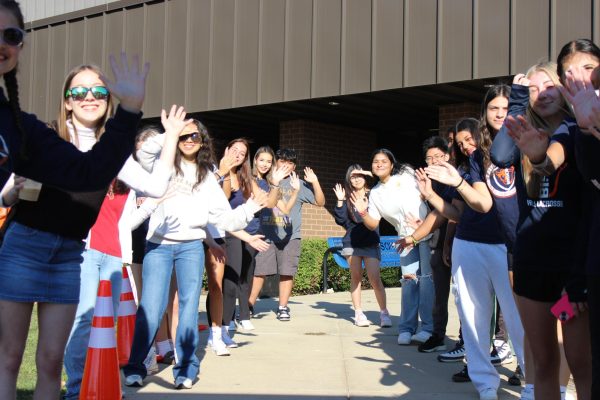Bilingual students aim to maintain their native language amid assimilation
America has been considered a cultural melting pot for centuries, welcome to all cultures and nationalities, but in an environment with so much diversity, students tend to assimilate and forget their native language and culture.
“I often know a word in English but I can’t remember the Russian translation,” junior Allina Iovu said. “In a different environment where everyone around you is speaking a different language, it’s easy to forget your own.”
Parents often find themselves signing their children up for afters-chool programs in hopes of helping their children learn about their culture and retain it at the same time.
“I attend Polish school on Fridays. It’s kind of boring, I don’t like it as much as I used when I was younger,” sophomre Olivia Bochnak said. “The thing I find most useful in retaining my culture is speaking Polish at home.”
This sort of attitude is not uncommon among second or third generation Americans. Some students have a hard time connecting to their culture in a classroom setting which can make the experience feel awkward and artificial.
As time progresses, language, a key element, evolves. This might pose a challenge to those trying to reconnect with their native language as the people the students interacts the most with often use a vocabulary that often has outdated words and references.
Don’t think that if you barely remember or never knew your native language that all hope is lost. According to BBC, a study by researchers in Israel found that adults were better at grasping grammar rules and applying them to new words in a lab setting.
The scientists compared three separate groups: 8-year-olds, 12-year-olds, and young adults in a language test comprised of listening, hearing and writing tasks. The adults scored higher than both younger groups on the test, and the 12-year-olds also did better than the younger children. This contradicts the idea that children are better at learning languages and that all is lost after a specific age.
“Generally a language can come back quicker to a speaker if they’ve already had it or had some exposure as children as opposed to those who had no exposure,” German teacher Julie Santeford said, “Based on my experience some students are brilliant at picking up a new language and others struggle just as much.”
Language fluency is composed of areas such as writing, comprehension, speaking, and reading. What many students find the hardest to practice and retain is writing proficiency, because of the plethora of verbal speaking opportunities students get when around their parents
“I don’t have trouble either understanding Polish or speaking it, but my comprehension skills are definitely superior,” Bochnak said. ”Ever since entering the school system, my reading and writing have lacked a lot.”
The school is continuously trying to help students retain their culture and language through implementing cultural clubs and more language programs as seen with the Spanish for native speakers [course] and clubs like the Latin American Student Organization and German Club.
“Now they’ve introduced this Spanish for Native Speakers [course], which I think is great and is growing every year. It would be amazing if some other languages like Bulgarian, Russian , or Polish had similar opportunities,” Santeford said.
There are steps that the school takes to provide students with options for keeping their native language alive, but according to students like Iovu there are ways that bilingual students can practice their native language
“I would say just talk to other people that speak the same language because talking to someone is the best way to learn,” Iovu said. “Try to think in your native language, as weird as that might sound, but when you think in your own language it helps you remember it.”





